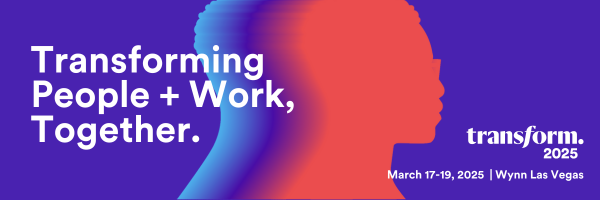
“Hiring justice-impacted individuals isn’t about charity; it’s an investment in hope, resilience, and a better bottom line.”
Redemption at Work: Why Second Chances Matter
Imagine this: It’s a sunny Tuesday, and you’re sipping your third cup of coffee, scrolling through a pile of resumes. You see a candidate who checks every box but one—their last role wasn’t at a Fortune 500 company; it was in a state correctional facility. Do you move them to the “no” pile? If so, you might miss out on your company’s most loyal, hardworking, and driven new hire.
Redemption. It’s not just a word—it’s a whole vibe. Think about it: who hasn’t needed a do-over at some point? Maybe it was a bad haircut (looking at you, 2006), a regrettable karaoke choice, or something far more serious. Mistakes happen, poor choices are made, and crime can have devastating impacts on our community. Here’s the thing: our ability to rise after falling, to rebuild after breaking—that’s what makes us beautifully, stubbornly human.
Now, let’s talk about how hiring formerly incarcerated individuals isn’t just about offering second chances—it’s about creating first opportunities for incredible transformations. Spoiler alert: it’s good for them, it’s good for your business, and it’s good for the world.
If it doesn’t make dollars, then it doesn’t make sense. It costs taxpayers over $132,860 annually to incarcerate someone in California. Meanwhile, programs like CROP—where justice-impacted individuals receive job training, housing, and wraparound support, run at a fraction of the cost and transform participants into productive community members. If that’s not a win-win, I don’t know what is. That’s not just good math; it’s a redemption arc worthy of a standing ovation and smart money.

The Business Case for Inclusion
Hiring justice-impacted individuals isn’t about charity; it’s an investment in hope, resilience, and a better bottom line. And let’s not ignore the data. Research from the SHRM 2021 Getting Talent Back to Work Report found that 85 percent of HR professionals and 81 percent of business leaders believe workers with criminal records perform just as well or better than workers without criminal records. Here’s why that matters: these individuals aren’t just employees—they’re gladiators who have fought their way back into society. They bring determination, loyalty, and grit to the workplace, often outperforming others. Plus, they stick around longer, which reduces turnover costs. Hiring them is the smart thing to do.
Studies show that companies that hire formerly incarcerated individuals experience:
- Higher retention rates. Employees with a lot to prove tend to stay put. They’re in it for the long haul, not just the 401(k).
- Increased diversity. True DEI initiatives aren’t just about who sits at the boardroom table but who’s stocking the shelves, managing teams, and driving company culture.
- A reputation boost. Let’s face it, “Redemption is our policy” looks great on the corporate Instagram feed.
But here’s the thing: This isn’t just about the spreadsheets. It’s about seeing people—whole, flawed, and capable—just like you and me.
But let’s not lose sight of what’s really at stake here: human potential. When leaders only focus on what someone has done wrong, they miss the brilliance of what that person could do right. Take a moment to reflect on the privilege of leadership. It’s not just about chasing profits or securing end-of-year bonuses. It’s about shaping policies that work for people—not just people in corner offices, but people on factory floors, mailrooms, or behind customer service counters. Leadership is the audacious belief that we can create workplaces where everyone thrives. So how do we start?
“When leaders only focus on what someone has done wrong, they miss the brilliance of what that person could do right.”
Building an Inclusive Workforce
First, ditch outdated hiring practices. Blanket policies that disqualify anyone with a criminal record are not only lazy but counterproductive. Instead, implement skills-first hiring. This means evaluating candidates based on what they can do, not what they’ve been through. Look for potential, not perfection. Need proof this works? Look at companies like Dave’s Killer Bread, where nearly one-third of employees are formerly incarcerated. Their inclusive hiring practices have led to better retention, higher morale, and a workforce that’s as diverse as it is dedicated.
Once someone is hired, the work doesn’t stop there. Let’s imagine Angela, a single mom and formerly incarcerated individual, starting her first day at a logistics company. She’s nervous, hopeful, and ready to prove herself. What if her employer paired her with a mentor, provided clear career pathways, and offered benefits like childcare assistance? Angela wouldn’t just succeed—she’d thrive. And that’s not just good for Angela—that’s good for business. Supportive workplace cultures boost productivity, engagement, and overall profitability. It’s a win-win-win.
What about the ripple effects? When someone like Angela succeeds, she contributes to the economy in ways that extend far beyond her paycheck. She rents an apartment, shops at local businesses, and maybe even invests in her child’s education. Each of these actions strengthens the local economy. And for the number-crunchers out there, here’s a stat: justice-impacted individuals who secure stable employment after release are two-thirds less likely to re-offend, according to the U.S. Department of Justice. Translation: fewer people cycling through the justice system means more people contributing to society.

But let’s get real for a second. The path to inclusion isn’t always smooth. Glass ceilings, pay disparities, and performative DEI initiatives can dim even the brightest lights. Leaders, if you want your employees to shine, you’ve got to clear the clouds. Start by conducting pay or salary audits to address wage gaps. Set measurable goals for internal promotions. And for the love of all that’s equitable, don’t just talk about diversity—live it. Hire people from all walks of life, invest in their growth, and create cultures where everyone feels seen and valued.
Here’s an idea: highlight employee stories. Celebrate their milestones, their promotions, and their achievements. Take Shelley, for example, who spent years behind bars but walked out with a determination sharper than any suit. She landed a role in tech sales and shattered company records in her first year. Her manager says, “She’s not just a star employee; she’s a reminder of what’s possible when you bet on people.” It’s a simple yet powerful reminder that redemption is a collective victory.
And while we’re on the subject of storytelling, let’s not forget the American Dream. Remember that? The idea that anyone, regardless of where they started, can build a better life through hard work and opportunity? That dream isn’t dead. It’s just waiting for us to revive it. Leaders, ask yourselves: What kind of legacy do you want to leave? Do you want to be remembered as someone who clung to the status quo or someone who dared to make a difference?
To put this into action, start small but think big. Partner with community organizations that specialize in reentry. Offer internships or apprenticeships specifically for justice-impacted individuals. Create an employee advisory council to give formerly incarcerated team members a seat at the table. And if you’re really feeling bold, advocate for systemic change beyond your workplace. Use your platform to push for policies that remove barriers to employment for justice-impacted individuals. After all, progress isn’t just about what we do—it’s about what we inspire others to do.
“The idea that anyone, regardless of where they started, can build a better life isn’t dead—it’s waiting to be revived.”
I want to end on hope. Hope isn’t a wish—it’s a strategy. It’s the belief that people can rise, workplaces can transform, and communities can thrive. It’s the audacious idea that everyone—yes, everyone—deserves a chance to shine. Leaders, HR professionals, and change-makers: the power to create this reality is in your hands. The question is, will you use it?
Because here’s the truth: hiring formerly incarcerated individuals isn’t just about changing lives. It’s about changing the world, one job, one story, and one-second chance at a time. As a formerly incarcerated leader, I am grateful I was given the opportunity to showcase my skills and determination. I aim to continue shattering glass ceilings and opening doors for those who are just like me.
About The Author

Terah Lawyer is the President of CROP, leading innovative reentry programs and housing solutions for formerly incarcerated individuals. With over 15 years of experience, she has developed impactful programs like CORE, served as the founding director of Impact Justice’s Homecoming Project, and she manages a $10M nonprofit budget. She’s a three-time degree holder and a recognized leader in workforce development, policy advocacy, and social justice. Her work has been featured by NPR, The New York Times, and CNN, and she serves on Governor Gavin Newsom’s Advisory Council. Terah’s lived experience fuels her passion for creating lasting change in communities.
Meet Terah and hear her inspiring story in person as we transform people + work together at Transform 2025.
